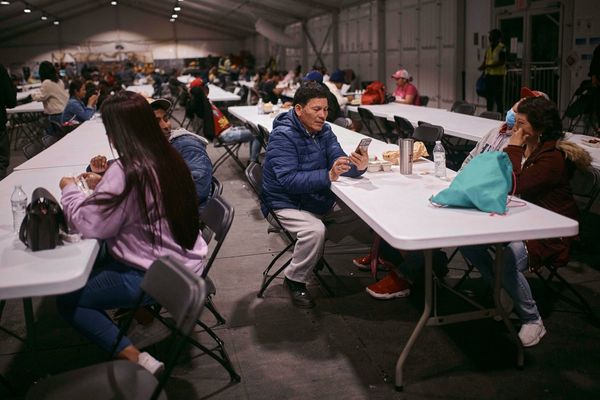It's a colossus of glass, metal, and stone with a location that makes all the other Paris monuments envious. Located between the Seine and the Champs-Élysées, the Grand Palais was built for the 1900 Exposition Universelle world fair to showcase French art. Closed three years ago for its first complete renovation in history, it's getting a second lease of life for the Paris Olympics and Paralympics. FRANCE 24 takes you behind the scenes.
Since its opening in 1900, variety has defined Paris's Grand Palais. From automobile fairs to agricultural events and horse competitions, its nave has seen dozens of events hosted under its majestic glass roof. And while it has held numerous commercial events, art has always been centre stage.
During its 124-year history, wars have pressed pause on this vitality. During World War I, the Grand Palais was transformed into a military hospital. During World War II, it hosted two exhibitions in service to Nazi propaganda. But in the late 1940s, the nave returned to hosting exhibitions, with the first Renault 4L presented there, followed by the pressure cooker in the 1950s. After a few years of neglect, the nave was back in action for the FIAC (International Contemporary Art Fair) of 1977. A variety of events followed: carnivals, ice rinks, electronic music concerts and fashion shows. In 2017, Tour de France cyclists even crossed under its glass roof. For the Monumenta contemporary art exhibition, the nave was taken over by world-famous French and foreign artists: Christian Boltanski, Anish Kapoor and Daniel Buren, to name but a few. As part of the Art Paris contemporary art fair, Chinese photographer Li Wei flew under the glass roof, remaining weightless for 10 minutes for an iconic photo shoot.
Make way for the Olympics
In the summer of 2024, the nave of the Grand Palais will host Olympic fencing and taekwondo events, a first for this architectural gem. "Athletes and the public will take in a building that is one-of-a-kind in the world," Didier Fusillier, president of the Grand Palais, told us enthusiastically. "You have to imagine that, in the Grand Palais, you could fit the entire Palace of Versailles. This immensity will create the experience of an extraordinary Olympic event," he continued. But in order to organise the Olympics there and continue to use the Grand Palais, restoration work was essential. This vast project began in March 2021 and is expected to be completed in spring 2025.
{{ scope.legend }}
© {{ scope.credits }}A renovation project facing daily challenges
Four years of work, a budget of nearly €500 million and up to 1,000 workers on site every day are needed to renovate the building in record time, as the project's director Daniel Sancho explained to us. "We face technical challenges every day depending on the discoveries we make: lead, asbestos, and this slows down the construction," Sancho explained. Another challenge is the nave, with its 13,500 square metres of glass roof. When asked about insulation, Sancho smiled: "There is no insulation. We are in a greenhouse. In order to improve the comfort of the public, we have therefore decided to make the space comfortable at ground level. We have integrated a fluid-based heating system into the flooring: we circulate either cold water or hot water to achieve a reasonable level of comfort without having to heat the 450,000 cubic metres of the nave, which would be a waste of energy."
Photographing the construction site to immortalise it
French photographer and visual artist Marguerite Bornhauser was chosen by the Grand Palais in 2021 to capture the renovation project. The 35-year-old was given carte blanche to immortalise the work, which she calls an "endless" source of inspiration.
"Everything inspires me," she told us as she took us to the roof of the Grand Palais, which is usually inaccessible. "There are the aspects everyone knows about the Grand Palais, such as the wonderful nave and the immense size. And at the same time, I have an eye for detail, so I like the perks from the construction site – everything that falls to the ground, a glint of light – it's endless!”
Bornhauser photographs these details with her digital and film cameras on the roof of the Grand Palais, in the nave, but also in the basement of the building, which she particularly loves. "The brightness from the construction site's neon lights is quite astonishing. It's spectacular, very theatrical. And I also find that it represents the workers' labour well. The men become a bit like shadows, there's a lot of chiaroscuro. It's dramatic actually with these lights falling like that, with these neon lights; the ceilings are lower, there are fewer colours, it's very, very different."
In the coming months, Bornhauser will continue to photograph the construction site. Because while the work on the nave will be complete for the Olympics, it will continue in the rest of the Grand Palais until June 2025.







